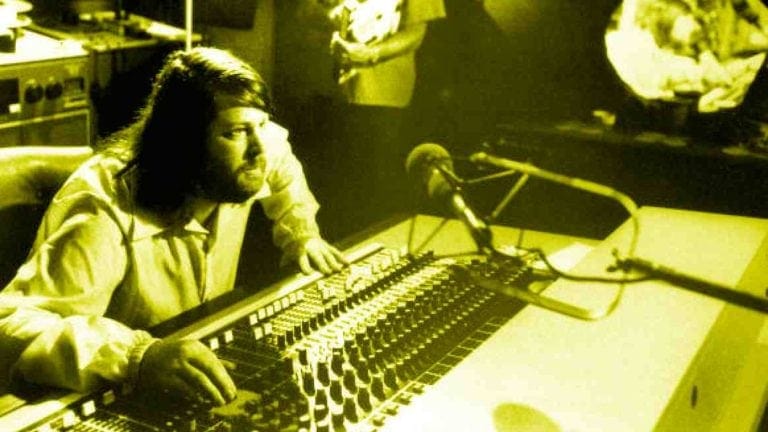Follow us
“Fashioning The Beatles”: The Looks That Shook the World

The Beatles were undeniably four “of the beautiful people.” Their haircuts and (sometimes outrageous!) sense of style established the lads as chic Sixties trendsetters. In her new book, Fashioning The Beatles, Deirdre Kelly examines each season in the Liverpool lads’ Pied Piper journey to the top, as they lead Beatlemaniacs and later, “the flower power” generation in a chic expression of self.
Kelly asserts that The Beatles were intrinsically cool before the world ever glimpsed it. As soon as he joined The Quarry Men, Paul McCartney (who, according to Kelly, cleverly hid his tight drainpipe jeans “under the baggy trousers of his school uniform,” to allay his father’s wrath) convinced John Lennon that they needed to dress similarly. Paul, Kelly states, “had an innate genius for songwriting and self-presentation.” (p. 6) And at the boys’ first gig together, on 18 October, 1958, at New Clubmoor Hall in Norris Green, they donned similar “creamy-colored, tweedy sport coats” with string bowties. (p. 14) Kelly says, “They dressed alike, signaling to the world their creative bond.” (p. 8) Lennon/McCartney began as they meant to go on.
By the time The Quarry Men had become The Silver Beetles and secured the backup slot on Johnny Gentle’s summer 1960 tour of Scotland, their sense of style had become “less Cliff Richard” and more individual. Encouraged by Gentle, who “schooled them on the virtues of ‘looking sharp’ on stage,” Kelly says, the band wore “dark long-sleeved button-down shirts edged with silver threads at the collar, denim-like trousers, and two-toned string shoes with rubber soles. The look was early Elvis. John would later describe it as art-school-inspired.”
During their stint in Hamburg (August 1960-December 1960), their rough living and performing conditions wreaked havoc on their wardrobe. By October of 1960, when the band was promoted from the Indra to the Kaiserkeller, “they found cheap clothing, hats, and trinkets to replace their battered outfits.” Low on funds and personal hygiene, Kelly says, “they no longer matched.” (p. 17)
But the friendship that John Lennon, Paul McCartney, George Harrison, Stu Sutcliffe, and Pete Best established with a group of artsy college students known as the “Exi” altered their bedraggled appearance. These young intellectuals – including Astrid Kirchherr, Klaus Voormann, and Jurgen Vollmer – were well-read, brooding nonconformists. And soon, the impressionable young Beatles began to imitate them, pulling on black leather trousers and jackets – with the odd embellishment of cowboy boots. George’s mother, Louise, had shipped an elegant pair of boots to her son as a souvenir of her recent trip to Canada. When George paraded them across the Kaiserkeller stage, John and Paul, Kelly tells us, surrendered every last shilling to purchase matching pairs in the German department store, Erdmann. (p. 19)
By the end of 1961, when Beatlemania first exploded in Litherland Town Hall, The Beatles (billed as “Direct from Hamburg!”) had returned home with their own unique style. Kelly says that Cavern Club compère Bob Wooler – writing for Merseybeat – described them this way: “They were not pretty boys…[They were] on the raw side, on the raucous side.” (p. 24) “And this,” Kelly observes, “gave them the edge.” (p. 24)
Of course, the “raw side,” the “raucous side,” was something that young entrepreneur and North End Music Store manager, Brian Epstein, thought The Beatles needed to tame. When he first glimpsed the popular band on 9 November 1961, he was intrigued. And when he offered them a loose managerial agreement the following month, he immediately began to polish their look.
Kelly carefully follows the transformation of “The Savage Young Beatles” into the polished young men who graced the Albert Hall stage at the 4 November 1963 Royal Command Performance. In less than two years’ time, Epstein gave The Beatles an entirely new public image. First, he requested that the boys have their hair trimmed by Jim Cannon at Liverpool’s respected Horner Brothers (p. 13) and then, he escorted them across the Mersey River to the Wirral, where gifted Birkenhead tailor Beno Dorn designed striking bespoke menswear. (p. 37) The group was permitted to keep the Cuban heeled boots that John and Paul had discovered in Charing Cross Road, London, in October of 1961, but the toe was extended, Kelly says, and the heel made higher. (p. 37) She points out that Epstein “made them more presentable, yes,” but he also “took the hard, raw wildness out of them.” Sadly, she laments, “that thing they had was unbelievable. [But] Brian groomed it out of them.” (p. 37)
Once The Beatles were clean, honed, and suited, their apparel began to be a matter of taste. Kelly demonstrates subtle individual differences in what the group wore for their Les Chadwick photo session and for the Know the North taping of their Cavern stage show by Granada TV. She follows their introduction to London-based tailor Dougie Millings, who presented the four to the world in “a three-piece chocolate brown suit with a velvet collar” under which they wore “pink-and-white gingham penny-collar shirts with Portofino cuffs…” (p. 51) The Beatles’ look, Kelly explains, was an ever-changing kaleidoscope, as the four went from strength to strength.
In 275 pages, replete with full-page color photos and excellent documentation, Kelly traces The Beatles’ stylistic progress through their career, following the evolution of their look from “rough and tumble” to “colorfully and eclectically” psychedelic. Furthermore, the particular look of each Beatle is carefully studied. John Lennon, for example, “was the only one amongst the Beatles to wear a hat and it marked him as the one to watch.” (p. 79) His Helen Anderson custom-made leather cap, Kelly says, established “his signature style.” And she points out that George Harrison had always been fashion-forward, “tailoring his [Liverpool Institute] school uniform to reflect his rebellious but innately stylish nature.” (p. 5) Paul’s formal leanings (always one to wear cufflinks, even as late as 1965) gave the band panache while Ringo’s famed rings provided intrigue. Each of the lads from Liverpool imbued the whole with a distinct sense of individuality.
Kelly traces the look of the band in February 1964, both on The Ed Sullivan Show and on the boards at Carnegie Hall. (p. 87) She tells wonderful true stories about their garb for A Hard Day’s Night, (p. 98) and she dissects their November 1965 MBE investiture attire: “The four-button, double-breasted jackets had notched lapels for an air of jaunty refinement.” (p. 108)
Of course, Kelly zooms in on the distinctive semi-military jackets that the boys wore on that thunderous stage within Shea Stadium. Indeed, Fashioning The Beatles covers every aspect of the band’s “evolving esthetic,” from leathers to corduroy to “textures, prints, and patterns.” (p. 123) Kelly gives her readers front-row seats as The Beatles set trends, supersede them, and then move rapidly on to something entirely different.
By the end of the 1960s, The Beatles’ new frontiers included the Apple Boutique, Leslie Cavendish’s salon in the lower level of Apple’s Kings Road premises, the Indian apparel that was designed for the group to wear to Rishikesh, and John’s “sans-clothing” appearance on the cover of Two Virgins. By 1969, the spark that had convinced John and Paul to wear matching sport coats for their 1958 New Clubmoor gig had dwindled to a dying ember. White Album photos, Kelly tells us, showed “Paul deliberately unshaven,” “John in a faded Levi’s jacket” and uncombed hair, and “George [with] the top button of his Henley T-shirt undone.” But this “shift from chic to shabby,” Kelly insists, is very much a part of the story. It is the beginning of the end.
As the Fab Four transition to solo musicians, Kelly continues to follow them into “1970 and Beyond” in a chapter she dubs “Slouching Towards Immortality.” She points out that from the very inception of their careers, the garments and looks adopted by John, Paul, and George (and later, Ringo) were never meant to please “the madding crowd.” Kelly states, “Through all the transitions – jeans, leather, Mod, neo-Regency, hippy, Western cowboy, Indian ashram, and back to jeans – [The Beatles] were mostly concerned to please themselves.” (p. 227) When criticized for having long hair, the young Beatles laughed and ignored it. When criticized for not looking like The Beatles anymore, the older Beatles simply shrugged. And when John Lennon was brutally criticized for shaving his head, he remarked, “I’m an artist, not a model, so fuck it.”
The most stylish element of The Beatles, Kelly asserts, was their unique sense of who they were. And that never changed. This is a riveting look at a seldom-discussed facet of Beatles history. Kudos to Kelly for focusing on the innate artistry of the lads, singular from head to toe.
-Jude Southerland Kessler
Photo: Getty Images


















They did look good.
Nice work, Jude.
As a fan who reads everything she can get her hands on about The Beatles, Deirdre Kelly’s book is a fantastic read!